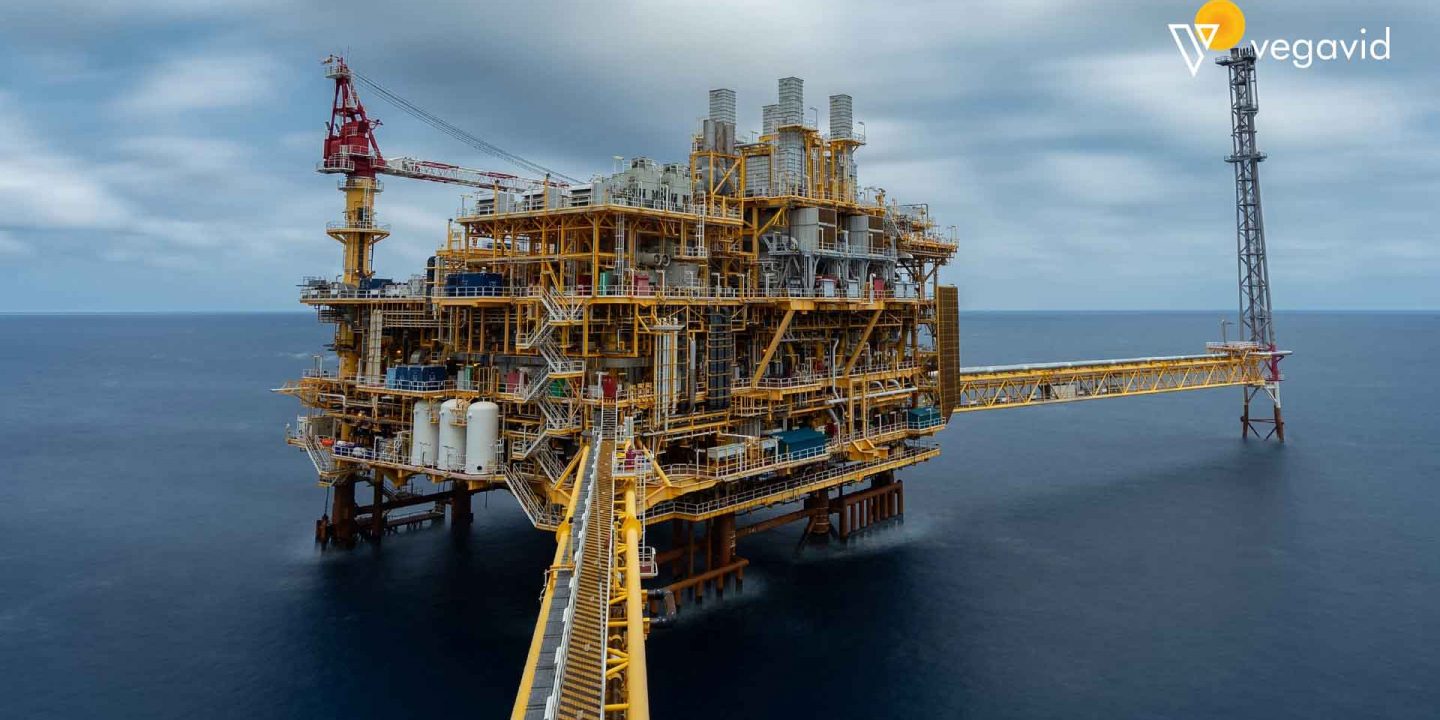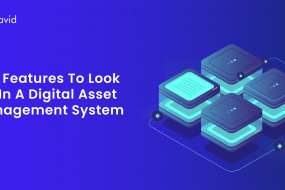
Digital transformation, powered by technologies like AI, IoT, cloud computing, automation, and blockchain, has the potential to radically reshape operations across the entire oil and gas value chain. From upstream activities like exploration and production to midstream processes like transportation and storage to downstream functions like refining and product distribution, digital solutions are being adopted to optimize assets, streamline processes, gain insights from data, enhance safety and sustainability, and reduce costs.
What is digital transformation in oil & gas?
Digital transformation in the oil and gas industry refers to the integration of digital technologies and business model changes to fundamentally improve operations, business processes, and customer experiences. It involves utilizing technologies like AI, IoT, cloud, blockchain and more to optimize productivity, drive efficiency gains, enhance safety and environmental sustainability, and create new revenue streams.
- For oil and gas companies, digital transformation means things like-
- Using AI to make better predictions for good production and reservoir performance
- Deploying IoT sensors to remotely monitor assets for maintenance needs
- Leveraging cloud computing for data storage and processing at scale
- Applying robotics and automation to make worksites safer and reduce costs
- Using Blockchain to improve supply chain transparency and Traceability
At its core, digital transformation is about using digital technologies to optimize operations, and fundamentally change the way work is done. It helps unlock data insights to drive better decisions, enhance collaboration, and bring together dispersed systems and data to deliver value for customers.
Ways to accelerate digital transformation in oil & gas?
Here are some key ways to accelerate digital transformation in the oil and gas industry:
- Adopt an enterprise-wide approach. Digital transformation should be an integrated effort across the entire organization, from exploration to production to logistics.
- Focus on business outcomes, not just technology. Identify specific business problems and goals that digital solutions can help achieve.
- Start with pilot projects. Test new technologies on a small scale first to prove concepts and build momentum.
- Develop a long-term digital strategy. Have a clear roadmap for how and where technologies will be deployed over time.
- Develop a data and analytics strategy. Data is the foundation for AI, machine learning, and other digital solutions.
- Integrate technologies into workflows. Implement technologies in ways that complement and augment how people work.
- Rethink legacy processes. Digital transformation is an opportunity to streamline and optimize existing business processes.
- Build ecosystems and partnerships. Collaborate with technology providers, startups, academia, suppliers, and customers.
- Upskill the workforce. Provide training programs to help employees gain skills for a digital-first environment.
- Cultivate a culture of innovation and experimentation. Foster an environment where employees are empowered to try new ideas.
- Change leadership mindsets. Executives must act as champions for digital transformation and model change-oriented behaviors.
Technologies involved in accelerating digital transformation in the oil & gas industry?
The main technologies involved in accelerating digital transformation in the oil and gas industry are:
Internet of Things (IoT) and connected devices
IoT and connected devices are revolutionizing the oil and gas industry. Sensors are being embedded in equipment and assets to monitor parameters and enable real-time tracking. Wireless IoT sensors deployed across wells, pipelines, and rigs detect leaks, monitor asset health and identify anomalies. They generate data that provides insights into equipment performance, energy usage, and production levels. IoT enables remote monitoring and control of assets. Oil companies can now optimize production, minimize downtime and predict maintenance needs by monitoring equipment data in real time. Connected devices are transforming how the industry manages operations and maximizes efficiency.
Big data analytics and artificial intelligence (AI)
The vast amount of data generated by IoT devices and other sources in the oil and gas industry has fueled the adoption of big data analytics and artificial intelligence technologies. AI and machine learning algorithms are used to gain actionable insights from petabytes of data related to sound production, reservoir performance, asset health, energy usage, and more.
Advanced analytics helps optimize operations, improve efficiency, predict equipment failures, detect anomalies, and optimize production levels. AI is also used for applications like autonomous drones for inspection, virtual assistants, and cybersecurity threat detection. The combination of big data and AI has the potential to dramatically transform decision-making, productivity, and safety across the oil and gas value chain.
Cloud computing and edge computing
Cloud computing and edge computing are playing important roles in enabling digital transformation in the oil and gas industry. The cloud provides scalable infrastructure for data storage, processing, and analytics related to IoT sensor data, production data, geospatial data, and more. It allows sharing of data and insights across the value chain.
Edge computing, which processes data locally at the source, is used for ultra-low latency applications like real-time optimization, anomaly detection, and process control. Together, cloud and edge computing provides the infrastructure needed to develop and deploy digital solutions at scale. They give oil and gas companies flexibility, agility, and the ability to harness massive amounts of data for insights that improve efficiency, maximize uptime and enhance sustainability.
Automation and robotics
Automation and robotics are increasingly being adopted in the oil and gas industry to improve efficiency, safety, and productivity. Automated systems handle repetitive and hazardous tasks like valve monitoring and control, pipeline pigging, and tank gauging. Robotic systems perform functions like inspection of pipelines and equipment, maintenance of difficult-to-reach areas, and material handling.
Automated drones conduct aerial surveillance and mapping. Advanced robotics is also being used for applications like autonomous drilling, pipeline welding, and explosives handling. Automation and robotics reduce manpower requirements, improve accuracy, minimize human error, and free up workers for higher-value tasks. They have the potential to significantly transform how operations are conducted and assets are maintained within the oil and gas industry.
Blockchain and smart contracts
Blockchain and smart contracts hold significant potential to transform transactions, asset tracking, and supply chain management in the oil and gas industry. Blockchain can improve transparency, traceability, and data sharing across the complex supply chain involving multiple stakeholders. It allows all participants to view a single version of the truth about transactions, assets, and events.
Smart contracts, which are self-executing contracts enabled by blockchain, can automate payments, document exchanges, and other transactions. This reduces complexity, costs, and the need for intermediaries. The oil and gas industry is exploring the use of blockchain and smart contracts for applications like trading energy commodities, tracking crude oil from wellhead to refinery, digitizing contracts, and managing financial settlements and royalty payments.
Overcoming Industry Challenges Through Digital Transformation
The oil and gas industry faces many challenges related to operational efficiency, asset optimization, safety, and environmental sustainability. Digital transformation powered by technologies like IoT, AI, cloud computing, automation, and blockchain has the potential to help oil and gas companies overcome these challenges.
For example, IoT sensor data and predictive analytics can be used to optimize asset performance and reduce unplanned downtime of equipment. Automation and robotics can make worksites safer and minimize human error. Cloud solutions can improve data sharing and collaboration across dispersed operations. AI algorithms can enable proactive maintenance strategies to minimize production losses. Blockchain solutions can improve supply chain visibility and traceability to meet sustainability objectives.
More broadly, digital transformation can help oil and gas companies address industrywide challenges like rising costs, reducing emissions, and transitioning to a lower carbon future. Technologies like AI and process simulation can optimize production levels while minimizing resource usage. Advanced materials and 3D printing can reduce the weight of equipment. And data-driven insights can point the way toward alternative fuels and new business models. By embracing digital solutions, oil and gas companies can not only overcome current challenges but also position themselves for success in the future energy transition.
Best Practices for Accelerating Digital Transformation
Here are some best practices for oil and gas companies to accelerate their digital transformations:
- Start small with pilot projects. Test new technologies on a contained scale to prove concepts and build confidence.
- Focus on business outcomes, not just tech. Identify specific goals that digital solutions can help achieve.
- Build a data management strategy. Data is the foundation for digital initiatives, so have a plan for collecting, storing, and accessing it.
- Develop an enterprise architecture. Map how new technologies will integrate with existing systems in a unified way.
- Build partnerships and ecosystems. Collaborate with technology providers, startups, academia, and others to innovate faster.
- Upskill the workforce. Provide training programs to help employees gain skills for a digital-first environment.
- Rethink legacy processes. Use digital technologies to streamline, optimize and standardize business processes.
- Adopt agile and DevOps approaches. Move from rigid waterfall projects to more iterative and collaborative ways of working.
- Cultivate a culture of experimentation. Foster an environment where employees are empowered to try new ideas.
- Change leadership mindsets. Executives must act as champions for digital transformation and model change-oriented behaviors.
- Govern digital initiatives centrally. Provide governance, standards, and guidance for consistency across the enterprise.
- Secure data and systems from the start. Build security into digital solutions from the ground up to mitigate risks.
Conclusion
Digital transformation, powered by technologies like AI, IoT, cloud, automation, and blockchain, has the potential to revolutionize every aspect of the oil and gas industry. By leveraging data insights, optimizing assessment, and streamlining processes, these technologies can help companies improve efficiencies, enhance safety and sustainability, reduce costs, and uncover new revenue streams. Adopting best practices like building data strategies, focusing on business outcomes, upskilling the workforce, and cultivating an innovative culture will accelerate the success of digital initiatives.
However, true transformation will require oil and gas companies to thoroughly rethink legacy processes and ways of working. Those who rise to this challenge by fully unleashing the power of digital transformation will emerge as leaders of the future of energy. By embracing digital solutions, oil, and gas companies can not only overcome current industry challenges but also position themselves for long-term sustainability and success in the years ahead. Now is the time for the industry to start its digital revolution in earnest to navigate an evolving energy landscape and thrive in the new digital era.











